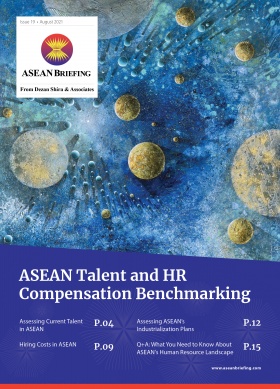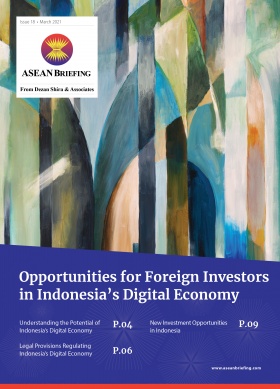Cambodia Introduces New Pension Scheme
In March 2021, Cambodia introduced Sub-Decree 32 which implements a new pension scheme in the country. Before Sub-Decree 32, only schemes related to occupational risks and healthcare were enforced.
Under the current social security scheme, employers with one or more employees must register themselves and their employees with the National Social Security Fund (NSSF) within 30 days of operating. The NSSF provides three schemes:
- Occupation risk insurance – work-related accidents;
- Healthcare insurance; and
- Pension scheme.
Sub-Decree 32 introduces the mechanism and procedures, contribution rate, and benefit claim for the four types of pension schemes provided under the decree. These are:
- Old-age pension;
- Disability pension;
- Survivor’s pension; and
- Funeral allowance.
What are the conditions for eligibility?
Old-age pension
To be eligible, the NSSF member must be registered under the pension scheme, must be at least 60 years of age, and have made contributions to the pension fund for at least 12 months.
Disability pension
To be eligible, the NSSF member must be registered under the pension scheme and have made contributions to the pension fund for at least 60 months before becoming disabled.
Survivor’s pension
The benefits are given to family members on the death of an NSSF member who has made contributions to the pension fund for at least 60 months.
Funeral allowance
The allowance is given only on the death of a person who is eligible for the old-age or disability pension.
Sub-Decree 32 stipulates that companies that have not registered with the NSSF must do so within 30 days of the effective date of the decree and that their employees must also be registered within three days of commencing employment.
What are the components of the pension scheme?
The pension scheme consists of two components:
- The compulsory pension scheme; and
- The voluntary pension scheme.
The compulsory scheme
Under the compulsory scheme, the contribution rate will be borne 50 percent by the employer with the remaining 50 percent by the employee.
The contribution rates will be done in three states, as follows:
- 1st stage – four percent of the contributable wage (wages before tax deductions) whereby the employer will contribute two percent and each employee two This will be implemented for the first five years of the scheme;
- 2nd stage – eight percent of the contributable wage, whereby the employer will contribute four percent and each employee four This will be implemented after the first stage is completed and for five years; and
- 3rd stage – there will be subsequent increases of 2.75 percent every ten years.
The voluntary scheme
NSSF members can also request to participate voluntarily in the pension scheme if they meet the following conditions:
- The applicant is under the age of 60 and unemployed, but is still able to make the pension payments;
- The applicant is under the age of 60 and wishes to pay the monthly contribution to receive a much higher old-age pension than the amount they are receiving under the compulsory pension scheme; or
- Have income higher than the wage ceiling.
The rate of the contribution under the voluntary scheme must be equal to or greater than that paid under the compulsory pension scheme.
About Us
ASEAN Briefing is produced by Dezan Shira & Associates. The firm assists foreign investors throughout Asia and maintains offices throughout ASEAN, including in Singapore, Hanoi, Ho Chi Minh City, and Da Nang in Vietnam, Munich, and Esen in Germany, Boston, and Salt Lake City in the United States, Milan, Conegliano, and Udine in Italy, in addition to Jakarta, and Batam in Indonesia. We also have partner firms in Malaysia, Bangladesh, the Philippines, and Thailand as well as our practices in China and India. Please contact us at asia@dezshira.com or visit our website at www.dezshira.com.
- Previous Article Indonesia’s Omnibus Law: New Provisions on Indonesia’s Trade Sector
- Next Article The ASEAN-India Trade in Goods Agreement







